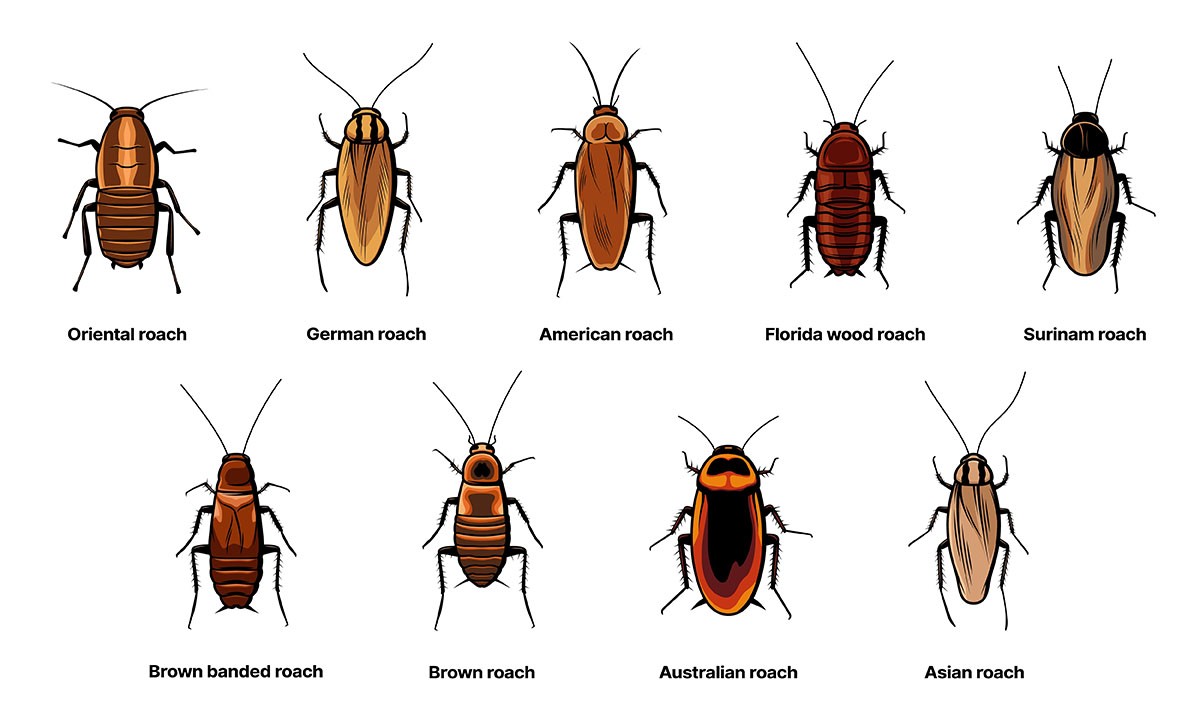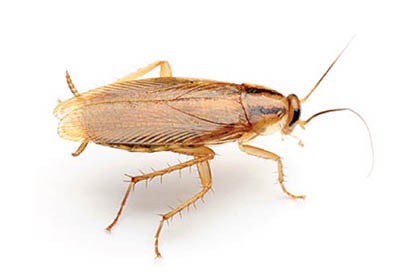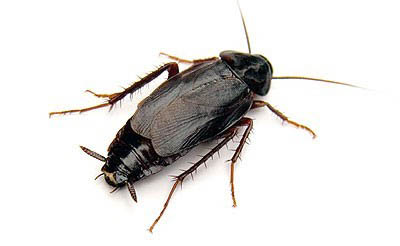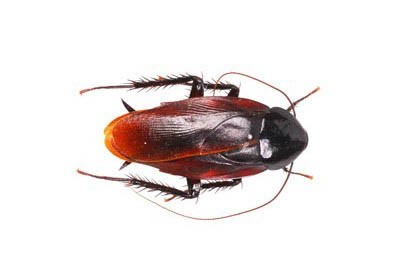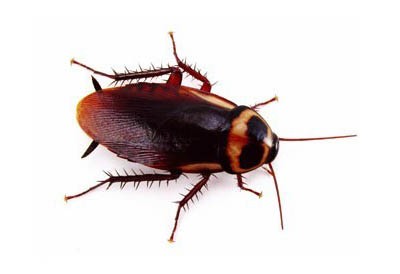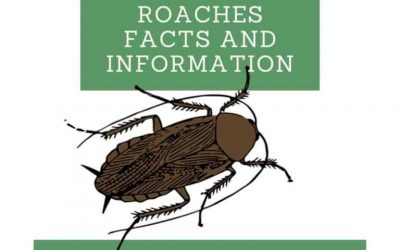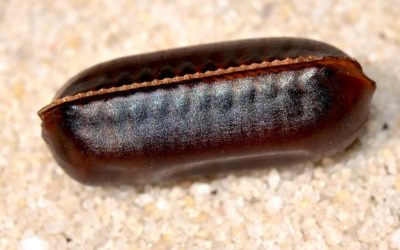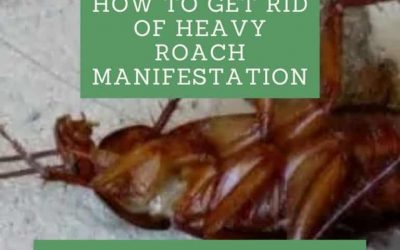There’s nothing like the sheer horror of flipping on the kitchen light at midnight, only to spot something scuttling across the counter. It always seems to happen when you’re least prepared, right? One second, you’re reaching for the cookie jar, the next you’re staring at a blur of brown legs darting for cover. Gross. And let’s be honest – most of us have been there at least once. Cockroaches aren’t just an urban problem, either. They’ve managed to set up camp in suburban homes, city apartments, even country cottages.
Believe it or not, scientists have catalogued more than 4,600 species of cockroaches worldwide, though only a small, determined group has figured out how to turn our homes into theirs. And those few? They’re experts at it. Just a single German roach, for instance, can kick off an infestation that feels like it exploded overnight, when really, those bugs have been quietly breeding behind your fridge for weeks. They’re sneaky like that. Oh, and they’re not just unwelcome houseguests. These pests are known to trigger allergies, make asthma worse, and carry bacteria you really don’t want near your kitchen surfaces.
But here’s the thing. Spotting a cockroach doesn’t have to turn into a full-blown panic. The secret is knowing what you’re dealing with. Different species behave differently, and the way to get rid of cockroach infestations often depends on exactly who you’re dealing with. That’s where a little cockroach identification goes a long way.
This guide is here to help you figure out which of these sneaky invaders is lurking in your space. Think of it like a personal “Most Wanted” wall for roaches – complete with mugshots, favourite hideouts, and dirty little habits. And just for fun (and maybe to make you feel slightly better about your kitchen situation), we’ll take a peek at some of the biggest cockroaches ever recorded, including a chunky Aussie species that’s been known to outweigh a small mouse. Don’t worry, they mostly hang out underground and, thankfully, not in your cereal box.
So, ready to outsmart the roaches? Let’s kick things off with a side-by-side comparison of the usual suspects you’re most likely to meet inside your home.
| Cockroach Type | Size (Adult Length) | Common Habitats | Distinguishing Features |
|---|---|---|---|
| German Cockroach (Blattella germanica) |
13–16 mm (1/2″–5/8″) | Indoors (kitchens, bathrooms, appliances). Prefers warm, humid spots near food/water. | Light brown/tan with 2 dark parallel stripes on shield behind head. Small, fast-moving. |
| Brown-Banded Cockroach (Supella longipalpa) |
10–14 mm (about 1/2″) | Indoors (ceilings, closets, furniture). Prefers warm, dry areas higher up in rooms. | Brown with 2 lighter band markings across wings. Males have full wings; females shorter wings. Often hides in electronics. |
| American Cockroach (Periplaneta americana) |
35–53 mm (1 1/2″–2″) | Mostly outdoors (yards, sewers, basements). May wander indoors to kitchens, drains, damp areas. | Reddish-brown with a yellowish figure-8 pattern on the shield behind head. Large and can glide/fly short distances. |
| Oriental Cockroach (Blatta orientalis) |
20–25 mm (about 1″) | Outdoors (under leaves, trash, damp sites); Indoors in cool, wet areas (basements, crawl spaces, drains). | Shiny black or very dark brown. Stocky shape. Also called a “water bug.” Cannot climb smooth surfaces; very limited flying ability. |
| Smoky Brown Cockroach (Periplaneta fuliginosa) |
30–38 mm (1.25″–1.5″) | Outdoors (tree holes, attics, leaf piles) in warm, humid regions. Sometimes in attics or upper walls indoors. | Uniform mahogany brown color (no yellow markings). Fully winged and flies readily, especially on warm nights. Attracted to lights. |
| Australian Cockroach (Periplaneta australasiae) |
25–35 mm (1″–1.4″) | Outdoors in tropical/subtropical climates (gardens, greenhouses). Can enter houses, similar to American cockroach behavior. | Reddish-brown like a small American roach but with yellow stripes along the wing edges. Fast and capable of flight. |
Now, let’s dive deeper into each of these roach suspects and learn how to identify them in your home.
German Cockroach Identification (Blattella germanica)
The German cockroach is the tiny terror of kitchens everywhere. Adults are light brown or tan and only about half an inch long, roughly the size of a penny. A key identifying feature is the two dark horizontal stripes on the plate behind their head (it looks like they’re wearing two little racing stripes). German roaches have a wide, flat oval body and long antennae. Don’t let their small size fool you; these guys are fast on their feet and excellent at hiding. You’ll often find them in warm, humid spots near food or water sources. Common hiding places include kitchen cabinets, under sinks, inside appliances (ever pulled out a toaster and found a surprise?), and bathroom cupboards. They’re mostly nocturnal, so if you see one darting away when you turn on the lights, that’s a strong hint of a German roach.
German cockroaches are lightning-fast breeders. A single female carries an egg capsule (ootheca) packed with dozens of baby roaches, and she can produce one after another. In fact, under ideal conditions, one German roach and her offspring can spawn over 30,000 roaches in a year, yikes! It’s no surprise this is the most common cockroach pest in homes worldwide. If you have a suddenly exploding roach population in your kitchen, there’s a good chance German roaches are to blame. They also produce potent allergens; their shed skins and cockroach droppings can trigger asthma and allergies in sensitive people. Identification tip: look for small black droppings that resemble black pepper or coffee grounds in the back of cabinets or drawers. German roach feces often appear as fine specks and dark smears near their hiding spots. Seeing those, along with the distinctive two-stripe brown roaches, confirms you have a German cockroach infestation.
Brown-Banded Cockroach
The Brown-Banded cockroach is another small indoor species that often gets confused with its German cousin at first glance. They’re similarly tiny (about 1/2 inch long) but have some differences in looks and lifestyle. Brown-banded roaches are light brownish with two lighter bands crossing their dark brown bodies, one band on the wings and one on the abdomen (the “bands” look like faint yellowish stripes). Males and females look a bit different: males have full-length wings and might even flutter or jump if disturbed, while females have shorter, stubby wings and tend to be a bit larger-bodied. Unlike German roaches that crave moisture, brown-banded roaches prefer drier, warmer areas of the house. You’re more likely to find them in living rooms, bedrooms, or higher up in kitchen cabinets. Think inside closets, behind picture frames, in dresser drawers, or hiding inside electronics (they enjoy the warmth of TV sets or routers).
A telltale sign of brown-banded cockroaches is their habit of sticking their pea-sized yellowish egg cases in hidden places, like under furniture or inside appliance crevices. They don’t need water as frequently as other roaches, so they spread out around the house, often in ceilings or attics. Because they hide in such out-of-reach spots, you might not notice brown-banded roaches until they’ve built up their numbers. Keep an eye out for their droppings: like German roach droppings, they look like black pepper specks but you might find them on top of picture frames or on shelves (areas Germans wouldn’t usually venture due to less moisture). If you spot tiny roaches in the bedroom or high on a wall, and especially if you see faint yellow bands on them, you’re likely dealing with brown-banded cockroaches. They’ve been cohabiting with humans for millennia, so don’t be surprised if they’ve made themselves comfortable in your cozy dry living room!
How to Identify American Cockroaches
Big, reddish-brown, and not from America at all – meet the American cockroach (it actually hails from Africa originally, arriving in the U.S. centuries ago via trade ships. This is the largest common house-infesting roach, with adults averaging about 1.5 inches long and sometimes reaching 2 inches or more. They are a shiny reddish-brown color with a distinctive yellowish band or figure-8 pattern on the pronotum (the shield behind the head). If you get close (not that you’d want to!), it almost looks like they have a yellow outline around their head area. American roaches have long wings and yes, they can fly, though usually it’s more of a glide. It can definitely startle you if one suddenly takes off. In the southern U.S., people often call these big roaches “palmetto bugs” or “waterbugs” (a catch-all term that sometimes also refers to other large roaches) because they’re commonly found around palmetto trees and damp areas.
American cockroaches are typically peridomestic, meaning they thrive outdoors but will come inside looking for food or if the weather drives them in. They love warm, humid environments. You’ll frequently find them in basements, crawl spaces, sewers, and drains, or scurrying around garage corners. Outdoors, they hang out in mulch beds, wood piles, and under plant debris. If you see a big reddish-brown roach in your bathroom or running across the garage floor, especially during warmer months or after heavy rain, it’s likely an American cockroach that wandered in. These insects are survivors. They can live up to 2 years and eat just about anything (from crumbs to book bindings). One female can produce many egg capsules (each containing about 16 eggs), and interestingly she can keep fertilizing eggs for months after a single mating. Identification tip: Look for larger, blunt-ended droppings (about the size of a grain of rice) in dark, humid areas, and for egg cases which are reddish-brown, about 8 mm long, often dropped in hidden crevices. If you find oval egg capsules in the laundry room or basement, or see a huge winged roach darting when you open a closet, you’re probably playing host to American cockroaches. Given their size, these are the ones that can really make you jump and go grab a shoe!
Oriental Cockroach (a.k.a. “Water Bug”)
The Oriental cockroach is sometimes called a “black beetle” or “water bug,” and for good reason – this roach is dark, chunky, and loves damp environments. Orientals are about an inch long when mature, with a glossy deep brown or black coloration. They have a more oval, less elongate shape compared to other roaches, and a greasy shine to their bodies. Males and females look different: males have wings that cover about 3/4 of their body (but they’re still flightless), whereas females have only tiny wing stubs. Neither sex can truly fly or even climb smooth vertical surfaces like some other roaches can (so sometimes you’ll find them trapped in sinks or tubs because they can’t get out!). Have you encountered a large dark brown/black roach plodding around in a cooler, damp part of the house? Say a basement corner or a bathroom drain? You might be looking at an Oriental cockroach.
Oriental roaches prefer life on the cooler side. They are often found outdoors under leaves, in flower beds, or hiding under piles of garbage. They’ll munch on decaying organic matter, which is why you often find them in sewers and drains, and they carry a pretty foul odor because of it. Many homeowners encounter them climbing up from floor drains or hiding under wet doormats. They are most active in the spring and can’t tolerate freezing temperatures (in winter they often retreat deeper into the ground or into heated structures). Orientals are notorious for being filthy since they come from sewer environments, they can track germs onto your kitchen surfaces. In fact, among common house roaches, most pest controllers and exterminators consider the Oriental cockroach to pose the greatest hygiene risk (they can spread bacteria that cause food poisoning, etc.).
If you notice a strong musty odor in addition to seeing black roaches, that’s another clue of an Oriental cockroach infestation. A lot of them in one place can create a stink. To identify them, remember: shiny black, big but can’t climb or fly, and often in wet areas. Seeing one crawl out of a shower drain or in a sump pump well is a typical Oriental cockroach move. It’s definitely an unwelcome surprise to find one crawling out of your sink drain, but the good news is they’re slower movers, so you might actually catch these “water bugs” more easily than the speedy Germans!
Smoky Brown Cockroach
The Smoky Brown cockroach is a close cousin of the American roach, but it’s uniformly dark brown, often described as a glossy mahogany color from head to toe. These roaches are about 1.25 to 1.5 inches long when mature, making them nearly as large as American cockroaches. One quick way to tell them apart: Smoky browns lack the American’s yellow pronotal markings; instead, the entire body and wings are a solid, rich brown. They also tend to appear darker overall. Smoky brown roaches are found primarily in warm, humid climates (think the southeastern United States, Gulf Coast states, as well as parts of Asia and Australia). They are outdoor roaches that love living in tree holes, under loose bark, in mulch and leaf litter, and even in your attic or crawlspace if given the chance. They require high moisture to survive, so they’ll gravitate to any humid hideaway.
Homeowners often encounter Smoky Browns on the exterior of the house. For example, around the roofline or in the gutters (where wet leaves accumulate). These roaches are strong fliers; they often take wing on warm evenings and are attracted to lights, meaning they might zoom toward your porch light or sneak in an open window at night. If you have one flapping around the living room after flying in, it’s likely a Smoky brown. Indoors, they don’t last long in dry environments, but if they find a damp spot like a plumbing void or laundry room, they might stick around. Infestations usually start outside, you might notice them in your garage, shed, or piling up in sticky traps in the attic. They can be tricky to eradicate because you need to address outdoor harborages (e.g., keep yard debris to a minimum and seal attic vents). Key identifying features of Smoky Brown roaches are their solid dark-brown color and their penchant for high, out-of-the-way places (they often hide in attics or upper levels of a building, unlike Oriental roaches which stay low). Also, if you see a big brown roach casually flying toward a light, Smoky Brown is a prime suspect. Keep your eye out for their cockroach egg cases too. They’re dark brown and usually glued to hidden, moist surfaces outdoors. While spotting a Smoky brown cockroach isn’t quite as hair-raising as an American cockroach for some folks (since Smokies are usually outdoors), it’s still a sign that you’ll want to tighten up your home’s perimeter to keep these large roaches at bay.
Australian Cockroach
Despite its name, the Australian cockroach isn’t limited to Australia. This tropical roach has made itself at home in warm regions worldwide (including the southern U.S.). In many ways, it looks and acts like a slightly smaller version of the American cockroach. Adults run about 1.2 inches long and are reddish-brown. The giveaway is the bright yellow markings on its body: Australian roaches have a yellow band around the edges of their thorax and yellow streaks along the outer front part of their wings. These markings make them look almost decorative, as if someone painted racing stripes on an American roach! If you see a “mini-American” roach with those yellow highlights, you’ve got an Australian cockroach.
Australian cockroaches are peridomestic as well, they live outdoors but will come inside in search of food or shelter. They especially like greenhouses and gardens, feeding on decaying plant matter and sometimes nibbling on plants. You might encounter them in flowerbeds, compost piles, or wandering into your home’s ground floor. Indoors, they prefer warm, humid areas (are you sensing a theme with these roaches?). They’re good fliers like their cousins, and often enter houses by flying in or crawling under doors. In Florida and other Gulf Coast areas, Australian roaches are common pests in attics and kitchens, much like American roaches. They can be a bit shy, often hiding during the day in wall voids or beneath appliances. One interesting tidbit: in the Smithsonian’s list of top nuisance roaches worldwide, the Australian cockroach ranks up there alongside German, American, and Oriental roaches. So while homeowners in cooler climates may never see one, those in subtropical areas certainly might. To identify an Australian cockroach, remember the yellow markings. If you catch a large roach and notice a yellow stripe along the wings or a yellow outline on the thorax, you can impress your friends by saying, “Ah, that’s an Australian cockroach!” (and then promptly show it the exit). As with other outdoor roaches, keeping doors and windows sealed and eliminating outdoor debris will help prevent these from visiting your abode.
The Biggest Cockroaches in the World (Just for Perspective!)
After dealing with tiny German roaches or even the big “palmetto bugs” in your house, you might be thinking, “Can it get any worse?” Well, in terms of sheer size, yes! cockroaches can get a lot bigger, but the good news is these giants usually aren’t home invaders. We’ve included this section for a bit of global context and maybe to make you feel a smidge better about the smaller critters you’re battling. Here are a couple of record-breaking roaches from around the world:
Giant Burrowing Cockroach (Australian Giant Cockroach – Macropanesthia rhinoceros): If there were a heavyweight championship for roaches, this Australian native would take the title. Found in tropical and subtropical Queensland (near Brisbane and surrounding areas), the giant burrowing cockroach is the world’s heaviest cockroach species, weighing up to 30-35 grams – about as much as a small mouse! They measure around 7.5-8 cm in length (3+ inches long) and have a chunky, armored appearance. Unlike the roaches in your kitchen, these hefty insects don’t have wings and they aren’t considered pests at all. In fact, they live outdoors in the bush, digging burrows as deep as 1 meter (3 feet) into the soil. They play an important ecological role by eating dead leaves and recycling nutrients. Not all cockroaches in Brisbane are considered pests – Giant burrowing cockroaches are sometimes kept as quirky pets! They’re also fascinating (for some) they can live for up to 10 years and even hiss (yes, hiss!) when disturbed. So if you ever visit Queensland and someone shows you a massive, heavy cockroach that lives in a terrarium, don’t freak out, it’s likely this gentle giant. It’s certainly an impressive insect, but thankfully you won’t find it crawling under your fridge, it much prefers its burrow in the wild.
Megaloblatta Cockroach (South and Central America): While Australia’s giant burrowing roach wins for weight, the longest cockroach award goes to a species in Latin America. Megaloblatta longipennis is often cited as the world’s largest cockroach by length and wingspan. Specimens have been recorded at nearly 10 cm long (about 4 inches) with a staggering 20 cm (8 inch) wingspan. That’s about the size of a small bird! There are even anecdotal reports of some reaching up to 15 cm (around 6 inches), though 3-4 inches is more typical. These megaroaches live in tropical rainforests in countries like Peru, Ecuador, Colombia, and Panama. They have long reddish-brown wings and can fly among the treetops. Can you imagine a one-foot wide cockroach buzzing by? Talk about nightmare fuel! The good news: Megaloblatta roaches stay far from human homes in their rainforest habitat. They’re more likely to be studied by entomologists than encountered in your kitchen. Still, it’s amazing (and perhaps a little comforting) to know that the roaches in our houses are nowhere near this size.
Honorable Mention: Madagascar Hissing Cockroach: Another famous giant is the Madagascar hissing cockroach, often about 2 to 3 inches long. This species is frequently kept as a pet or seen in insect zoos. They’re wingless, thick-bodied roaches that make a distinct hissing sound by forcing air through their breathing pores. Like the other giants above, they aren’t pests to people (unless you consider scaring your friends a form of pestering!). Hissing cockroaches live in forest floors eating decaying material. They show us that cockroaches can fill many niches in nature, not all are the kitchen-infesting kind.
Learning about these giant roaches can actually be somewhat reassuring. It puts into perspective that the common house cockroaches we deal with, while unpleasant, are relatively small. It’s also a reminder that cockroaches as a group are incredibly diverse and have important roles in ecosystems. Of course, when it comes to your home, any size cockroach is unwelcome. So watch out for the early warning signs of an infestation, so you can nip things in the bud before they get out of hand. But at least you likely won’t be facing a 3-inch burrowing behemoth in your bathroom!
Your Home Doesn’t Have to Be a Roach Motel – We Can Help!
Dealing with cockroaches can feel overwhelming, we get it. These pests are survivors that have been around since the dinosaurs, but that doesn’t mean you have to tolerate them in your living space. You’ve learned about the different types of house roaches, how to identify them, and ways to prevent an infestation. If you’ve tried the DIY route and those creepy crawlers are still playing hide-and-seek in your cabinets, don’t lose hope. This is where professional cockroach pest control heroes come to the rescue.
Every roach situation is a bit different. An experienced exterminator will know exactly where to look, what species is involved, and the most efficient treatment plan to wipe them out and keep them from coming back. Safe, targeted roach baits and integrated pest management techniques that fit your specific problem are needed, whether it’s a stubborn batch of German roaches in an apartment or big American “palmetto bugs” entering from the yard.
Don’t wait until a mild cockroach problem turns into a full-blown infestation. Contact us online for a free quote or to schedule a thorough cockroach inspection. With professional help just a phone call away, you can reclaim your kitchen and enjoy peace of mind knowing those unwelcome pests are gone for good. Say goodbye to flicking on the lights and seeing roaches, and say hello to a cleaner, healthier, roach-free home! We’re ready to help you make that happen.

